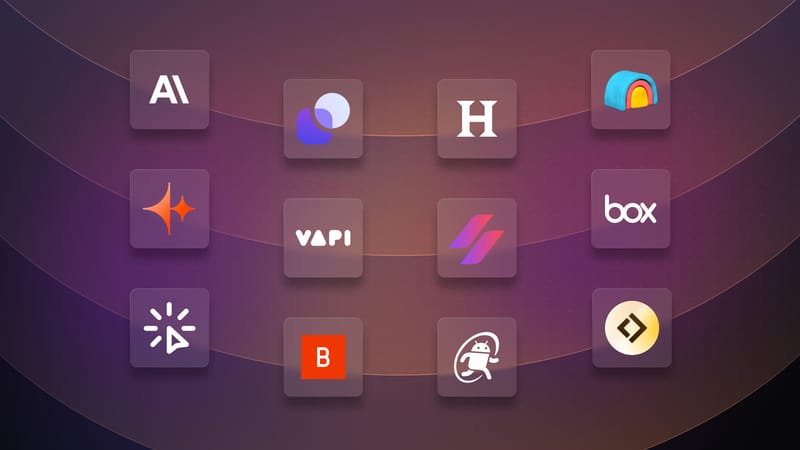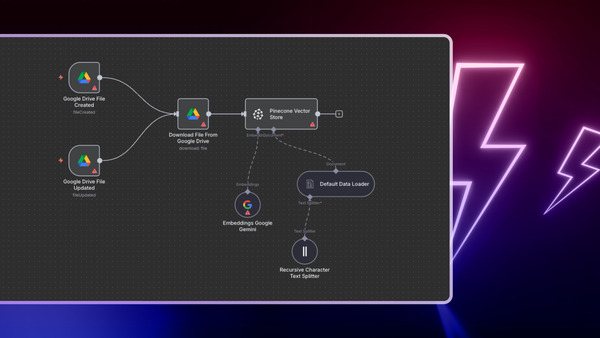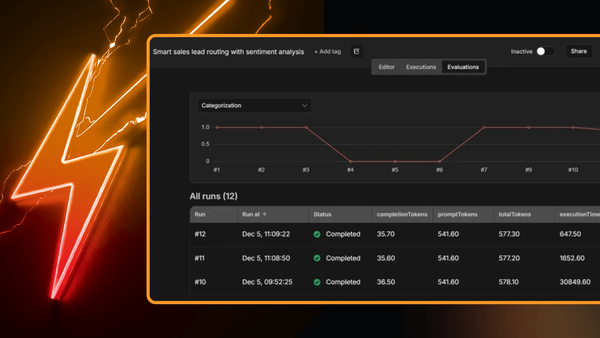The promise of fully autonomous AI agents sounds appealing: just set a goal and let AI handle everything.
In reality, complete autonomy often comes with a hidden cost.
While it’s relatively straightforward to build human-in-the-loop agents for specific tasks, creating truly autonomous systems means surrendering control to LLMs. And despite their capabilities, LLMs can deviate from the optimal path in countless unexpected ways.
This leads to a fundamental tradeoff that every business faces: how much autonomy do you actually want, and how much oversight can you realistically provide?
The answer isn’t universal. A legal firm reviewing contracts needs different guardrails than a sales team enriching prospect data. Some workflows benefit from full autonomy, while others require strategic human checkpoints.
In this guide, we review 12 autonomous AI agents that handle this tradeoff in different ways – from simple no-code builders to sophisticated systems that operate independently for hours on end.
We also show you how platforms like n8n let you build custom autonomous workflows where you control exactly how much independence you want to grant your AI agents.
Table of contents
- What are autonomous AI agents?
- 12 top autonomous AI agents of 2025
- Building fully autonomous AI agents with n8n
- Wrap up
- What’s next?
What are autonomous AI agents?
The main difference between traditional AI agents and autonomous ones lies in the level of human oversight required to define and execute objectives.
Consider a customer service chatbot that follows your predefined rules and forwards complex issues to humans. It’s helpful, but it operates within the strict boundaries you’ve set.
Now imagine an AI system tasked with “increasing customer retention by 15%.” A truly autonomous version would independently analyze your customer data, identify at-risk segments, design retention campaigns, and execute them across multiple channels – without asking for permission at every step.
This level of independence can deliver impressive results, but it also leads to unpredictability. The agent might choose strategies you wouldn’t have considered, access data in unexpected ways, or interpret “success” differently than you intended.
Most successful implementations today operate somewhere in the middle—autonomous enough to handle complex multi-step tasks, but with strategic human oversight at critical decision points.
Core characteristics of autonomous AI agents
Autonomous AI agents share several key characteristics that distinguish them from traditional automation:
- Goal-driven behavior: they work toward their objectives rather than simply following predefined steps;
- Multi-step planning: they can break down complex goals into actionable subtasks;
- Environmental adaptation: they adjust their approach based on real-time feedback and changing conditions;
- Tool integration: they can connect and coordinate multiple systems to accomplish their goals.
Difference from traditional AI agents
| Feature | AI Agents | Autonomous AI Agents |
|---|---|---|
| Autonomy Level | Partial | Full or near-full |
| Task Complexity | Single or simple workflows | Complex, evolving multi-step plans |
| Human Supervision | Frequent or required | Minimal or optional |
| Adaptability | Low | High |
| Planning & Reasoning | Rule-based or reactive | Goal-directed and strategic |
Key autonomous AI agents use cases
Autonomous AI agents excel in scenarios where human supervision would slow down complex, multi-step processes. Here are the most common areas of application:
- Research and competitive intelligence: long-running research projects with source data cross-referencing and synthesis into the final reports, including graphics, code snippets and bibliography.
- Complex workflow automation: complete business processes from lead qualification to customer onboarding, adapting to each prospect’s characteristics.
- Web navigation and data extraction: navigate website pages, handle dynamic content, and extract structured data while adapting to changes.
- Strategic decision-making: analyze conditions, evaluate options and execute decisions within predefined parameters.
12 top autonomous AI agents of 2025
The autonomous AI agent landscape includes hundreds of specialized tools. We’ve curated 12 agents that represent different approaches to the autonomy challenge.
Our selection follows a progression: we start with user-friendly business-focused agents that anyone can deploy quickly. Then we move into specialized agents built for specific industries like legal or sales. Finally, we explore infrastructure-level tools that developers use to build custom autonomous systems from the ground up.
This selection reflects the variety of approaches currently being tested across different industries and use cases.
| Tool | Category | Target Audience | Primary Use Cases |
|---|---|---|---|
| Lindy AI | No-Code agent builder | Business users | Workflow automation, customer service, lead generation |
| Relevance AI | Multi-agent platform | Enterprise teams | Multi-agent workflows, business process automation |
| Harvey AI | Legal AI agents | Legal professionals | Legal document review, contract analysis, compliance |
| Clay | Sales enrichment | Sales teams | Sales prospecting, data enrichment, outreach personalization |
| HubSpot Breeze |
CRM AI agents | HubSpot users | Marketing, sales, customer service automation within HubSpot |
| SalesCloser AI | Sales automation | Sales teams | Automated sales conversations, lead qualification |
| VAPI | Voice AI infrastructure | Developers | Voice AI applications, phone automation, conversational interfaces |
| Box AI Agents | Document AI agents | Enterprise document management |
Document analysis, content management, enterprise search |
| Browserbase Director |
Browser automation | Developers/ automation teams |
Web scraping, browser automation, testing |
| legacy-use | Legacy system integration |
Enterprise IT | Legacy system API modernization |
| Droidrun | Mobile automation | Mobile app developers | Android device automation, mobile testing |
| Claude Code | Coding assistant | Software developers | Autonomous coding, code review, development automation |
Lindy AI
A no-code platform that lets you build AI agents by describing tasks in English, with a drag-and-drop interface.
Distinctive features: Lindy allows you to create AI-employees in minutes and add components with typical tasks such as a phone call, email or calendar. The platform also offers access to a template marketplace where you can select pre-built agents for common tasks.
Strengths:
- Beginner-friendly setup,
- strong customer service automation capabilities,
- over 100 native integrations, including CRMs, email platforms, and calendars.
Ideal users: Small businesses and non-technical teams who want automation without the complexity - perfect for customer support, lead nurturing and meeting scheduling.
Pricing: Starting at $50/month for 5,000 credits, with a free tier that offers 400 credits per month for basic actions to test the waters.
Relevance AI
A multi-agent platform where teams of specialized AI agents collaborate on complex workflows, applying advanced chain-of-thought reasoning.
Distinctive features: Unlike single-agent platforms, Relevance AI deploys multiple agents that work together - think of it as hiring an entire AI department rather than just one assistant. The platform includes agent-to-agent communication protocols and dynamic task allocation among team members.
Strengths:
- Superior multi-agent coordination,
- enterprise-grade security with SOC2 compliance,
- comprehensive analytics to monitor the performance of your AI team.
Ideal users: Enterprise teams handling complex business processes that require multiple specialized skills - like research pipelines, content generation workflows, or multi-stage sales processes.
Pricing: Starting at $19/month for 10,000 credits, with enterprise plans offering custom pricing and dedicated infrastructure.
Harvey AI
Legal-specific AI agents designed exclusively for law firms, with built-in understanding of legal processes and jurisdiction variations.
Distinctive features: Unlike general-purpose platforms such as Lindy or Relevance AI, Harvey is specifically designed for legal tasks. It understands attorney-client privilege, ensures compliance across different jurisdictions, and integrates directly into legal practice management systems.
Strengths:
- In-depth legal expertise that generic AI agents can’t match,
- regulatory compliance integrated into every workflow,
- proven ROI at large firms like Allen & Overy and PwC.
Ideal users: Law firms and corporate legal departments involved in contract review, legal research, due diligence, and compliance monitoring - areas where legal accuracy is essential.
Pricing: Enterprise-only with custom pricing.
Clay
Sales intelligence platform where AI agents autonomously research prospects and enrich data by combining information from 50+ sources.
Distinctive features: While Harvey AI specializes in legal tasks, Clay focuses entirely on sales intelligence. Its “waterfall enrichment” feature automatically tries multiple data sources until it finds the information you need and can perform complex web searches that go far beyond what CRM-integrated tools like HubSpot Breeze offer.
Strengths:
- Exceptional data quality with comprehensive prospect profiles,
- AI-powered personalization at scale, and integration with popular tools such as n8n.
Ideal users: Sales teams and revenue operations that need thorough prospect research and account-based marketing - especially those handling high-value B2B sales where personalization matters.
Pricing: Starting at $149/month for 2,000 credits, with usage-based pricing that scales based on your research volume.
HubSpot Breeze
CRM-integrated AI agents that work natively within HubSpot’s ecosystem, covering prospecting, customer service, content creation and social media management.
Distinctive features: Unlike standalone platforms like Clay or Lindy which require separate integrations, Breeze agents live directly inside HubSpot. You get multiple specialized agents - for prospecting, customer service, content, and social media - all sharing the same customer data without having to worry about setup.
Strengths:
- Zero learning curve for existing HubSpot users,
- seamless data flow across all agents,
- enterprise-grade reliability that matches HubSpot’s infrastructure.
Ideal users: HubSpot customers who want AI automation without the complexity of managing multiple tools - perfect for marketing and sales teams already invested in the HubSpot ecosystem.
Pricing: Breeze uses HubSpot Credits which are included in every seat-based tier. Additional packs begin from $10/mo for 1000 credits.
Salescloser AI
Conversational AI that handles complete sales conversations autonomously across email, chat, SMS, and phone channels.
Distinctive features: While HubSpot Breeze works within your existing CRM, Salescloser focuses exclusively on actual sales conversations. It can qualify leads through natural dialogue, handle objections, and book appointments - essentially replacing your SDR team rather than just supporting it like Clay’s research agents do.
Strengths:
- Salescloser claims to offer a 30-40% improvement in lead qualification,
- a natural conversation flow that doesn’t feel robotic,
- 24/7 availability that never misses a hot lead.
Ideal users: SMBs and lead generation companies that need to scale their sales conversations without hiring more staff - especially effective for qualifying inbound leads and scheduling appointments.
Pricing: Available upon request.
VAPI
Voice AI infrastructure platform that provides the building blocks for creating conversational voice applications with a response time of less than 500 ms.
Distinctive features: Unlike conversation-oriented tools such as Salescloser which cover specific sales scenarios, VAPI is purely infrastructure - think of it as the voice equivalent of what n8n does for workflow automation. It offers real-time webhook integration during actual calls, making it perfect for building custom voice agents that can be connected with other automation platforms.
Strengths:
- Extremely low-latency speech processing,
- extensive customization options for brand-specific voice experiences,
- direct telephony integration that allows you to build complex phone systems.
Ideal users: Developers and businesses building voice-enabled applications - from customer service phone automation to accessibility applications that require a reliable voice infrastructure.
Pricing: Usage-based between $0.05-0.20 per minute, depending on the model, so you only pay for actual conversation time.
Box AI Agents
AI for enterprise document management that provides intelligent search, automatic classification, and workflow automation across organizational content.
Distinctive features: Box AI Agents specialize entirely in document intelligence within enterprise environments. Unlike general-purpose platforms, these agents understand document hierarchies, compliance requirements and can automatically enforce retention policies across large content repositories.
Strengths:
- Deep integration with Box’s content management ecosystem,
- enterprise-grade security,
- advanced document understanding that goes beyond simple text extraction.
Ideal users: Large organizations with complex document workflows, compliance requirements, and knowledge management needs - particularly useful for contract lifecycle management and regulatory reporting.
Pricing: Included when purchasing Box Enterprise Plus / Enterprise Advanced plans, with additional AI units for high-volume usage.
Browserbase Director
An LLM-powered browser automation platform that generates reproducible scripts from natural language instructions and is built on a scalable cloud infrastructure.
Distinctive features: Browserbase Director is a new product for creating web automations using AI. Unlike traditional browser automation which requires coding skills, Director lets you describe what you want in a text field and generates reusable scripts - bridging the gap between no-code simplicity and developer-grade reliability.
Strengths:
- Advanced anti-detection capabilities that bypass bot protection,
- reliable scaling across thousands of browser sessions,
- the ability to turn one-time automations into repeatable workflows.
Ideal users: Developers and automation engineers who need sophisticated web scraping or automated testing - especially those building workflows that integrate with platforms like n8n.
Pricing: Director is free to create automations, but Browserbase's standard rates apply for execution: staring at $20/month for the Developer Plan.
Legacy-use
An open-source tool that automatically creates REST APIs for legacy systems without requiring changes to existing applications.
Distinctive features: While other tools focus on modern integrations, legacy-use solves the problem that many enterprises face - connecting decades-old systems with modern AI workflows. It uses multimodal LLMs to understand legacy interfaces and automatically generate API endpoints, making it possible to include old Windows software in your automation pipelines.
Strengths:
- No code changes to existing legacy systems required,
- AI-driven automation that reduces manual configurations,
- a cost-effective approach to modernization that doesn’t require expensive system overhauls.
Ideal users: Enterprise IT teams and system integrators dealing with legacy applications or older ERP systems that need to be connected with modern tools and workflows.
Pricing: Open-source with free community edition, plus commercial support and enterprise features available for complex deployments.
Droidrun
Open-source framework that enables LLM-driven automation of Android devices.
Distinctive features: While legacy-use modernizes old desktop software, Droidrun brings AI automation to mobile devices. It can control both physical and virtual Android devices using computer vision and natural language processing - essentially giving you an AI assistant that can navigate mobile apps just like a human.
Strengths:
- Native mobile automation capabilities that work with any Android app,
- LLM-powered intelligent interactions that adapt to UI changes,
- support for both testing scenarios and production use cases.
Ideal users: Mobile developers and QA engineers who need to automate app testing, user behavior simulation, or accessibility testing across different Android devices and app versions.
Pricing: Open-source and free to use, with upcoming cloud platform options for large-scale mobile automation.
Claude Code
Anthropic’s official autonomous coding agent that handles complete feature development from natural language descriptions, with built-in CI/CD automation via GitHub Actions.
Distinctive features: While Claude models already support popular coding agents like Cursor and Aider, Anthropic now offers its own CLI tool. Compared to these alternatives, Claude Code enables more autonomous operation - it requires less manual oversight when handling multi-step development tasks from planning to deployment.
Strengths:
- High-quality code generation with documentation,
- reasoning capabilities for complex development tasks,
- GitHub Actions integration that automates your entire development pipeline.
Ideal users: Software developers and teams who want to automate feature development, code refactoring, and test creation - especially valuable for teams that want to focus on architecture while AI handles the implementation details.
Pricing: Included in the Claude Pro subscription for $20/month or the Teams plan for $25/month. Also available via API with usage-based pricing.
Building fully autonomous AI agents with n8n
The agents we’ve reviewed solve certain tasks well, but what if you need something that’s better tailored to your business?
Perhaps you need an agent that processes invoices, updates your CRM, sends Slack notifications, and forwards complex cases to humans – all based on your exact business rules. Or maybe you want to combine multiple AI capabilities while maintaining control over when the agent acts independently and when it asks for approval.
This is where n8n becomes essential for building autonomous agents that work exactly the way you need them to:
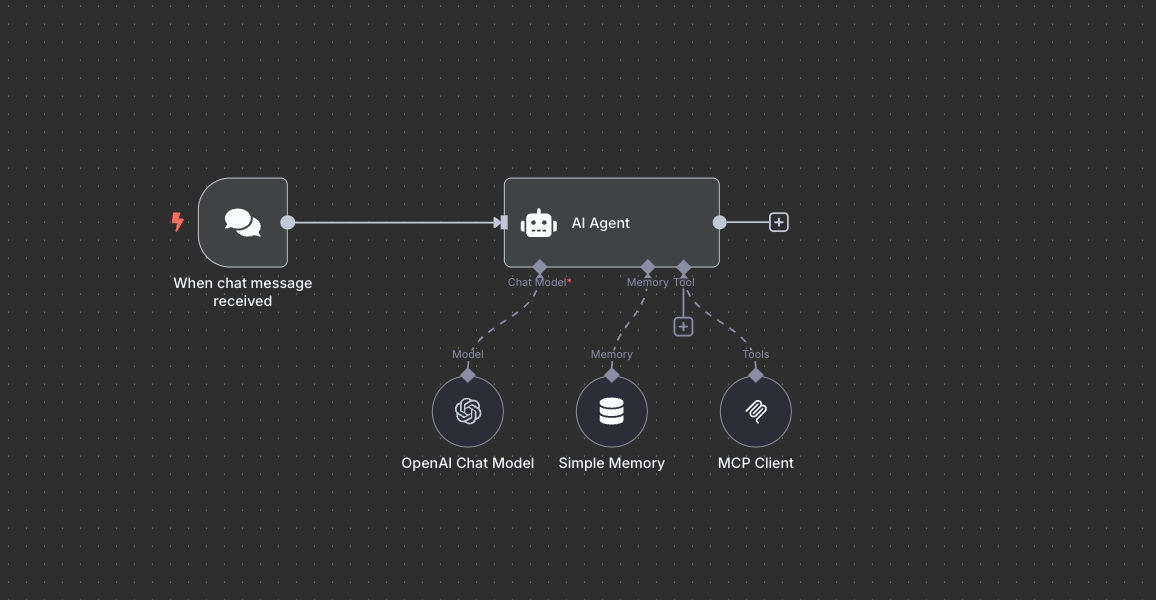
Flexible autonomy, your way
With n8n, you can precisely control how autonomous your AI agents become. You can build anything from fully autonomous systems that run for hours without human intervention to agentic workflows that combine AI decision-making with strategic human oversight.
The platform supports multiple triggers for hundreds of services, as well as webhooks, schedules, file changes, database updates – so your agents can automatically spring into action based on real-world events. And with n8n’s visual canvas, you can easily add human-in-the-loop checkpoints wherever you need them.
Recent n8n updates make autonomous agents more reliable
Several recent n8n features are specifically designed to address the challenges of building production-ready autonomous agents:
- LLM streaming: real-time response streaming means your agents can provide immediate feedback during long-running tasks, making them more responsive and enabling better monitoring.
- Model selector: automatic model selection allows your agents to dynamically select the optimal LLM for each task or implement fallback mechanisms when a model is unavailable—crucial for reliable autonomous operation.
- AI evaluations: the built-in evaluation framework helps you test and measure your autonomous agents before deployment, turning guesswork into evidence when optimizing performance.
- Sub-agents: the new AI Agent Tool allows you to build multi-agent teams where a primary agent delegates specialized tasks to other agents—all within a single workflow.
- Expanded ecosystem: thanks to verified community nodes, you can now access specialized integrations directly from the canvas, including tools for domain-specific autonomous workflows.
Building your first autonomous agent in n8n
Creating an AI agent in n8n is a straightforward process:
- Start with a trigger that fits your use case (webhook, schedule, database change, etc.)
- Add an AI Agent node connected to your chosen LLM
- Equip it with custom tools for specific actions – web scrapers, database queries, API calls, file processors
If necessary:
- Add evaluation checkpoints to monitor performance
- Include human-in-the-loop feature when business judgment is critical (Send and Wait for a Response operation in various nodes)
Here’s a 2-part series on creating AI agents:
Explore community-built agents in the template gallery:
Wrap up
We explored 12 autonomous AI agents covering a vast automation spectrum:
- Business-ready solutions: Lindy AI and Relevance AI offer quick deployment for common workflows, while specialized agents like Clay (sales) and HubSpot Breeze (CRM) excel in their target domains.
- Communication agents: SalesCloser AI handles sales conversations autonomously, while VAPI provides the infrastructure for building custom voice applications.
- Enterprise tools: Harvey AI transforms legal workflows, Box AI Agents manage document workflows at scale and are perfect for companies with high compliance requirements.
- Developer infrastructure: Browserbase Director automates web interactions, legacy-use modernizes old systems, Droidrun controls mobile devices, and Claude Code handles complete feature development.
Most excel in their niches—but what if you need an agent that processes invoices, updates multiple systems, and routes complex cases to the right people?
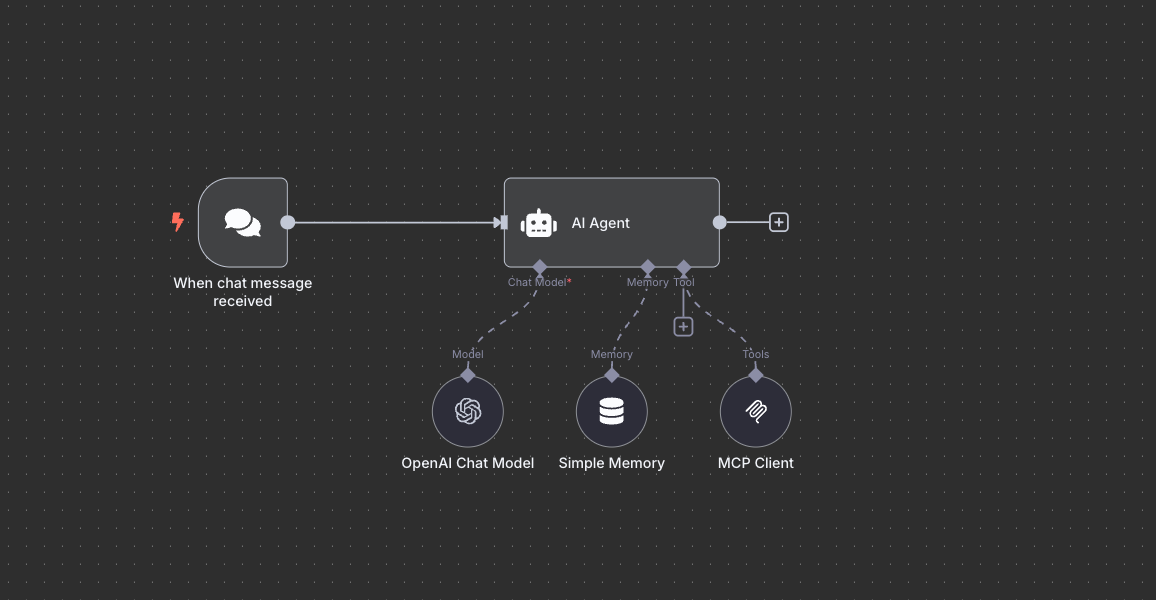
That’s where n8n comes in: it lets you build fully autonomous agents that combine multiple capabilities with the exact level of human oversight you want, while integrating seamlessly with specialized tools for advanced needs.
What’s next?
Ready to dive deeper into the world of autonomous AI agents? Here are your next steps:
- Master the foundations: learn about AI agent frameworks and when to choose each one - from no-code builders to programming-first solutions that give you complete control.
- Check out real-world applications: explore 15 practical AI agent examples across industries like finance, healthcare, and e-commerce to develop ideas for your own use cases.
- Build with confidence: follow our step-by-step tutorial for building production-ready AI agents with evaluation frameworks and reliability patterns that work at scale.
- Go open-source: discover 11 game-changing open-source AI tools that let you build autonomous agents without vendor lock-in or unpredictable costs.
- Enterprise deployment: read our guide to AI workflows for cautious enterprises to implement autonomous agents with proper governance, security, and compliance controls.
- Explore AI integrations: browse n8n’s complete AI nodes catalog to see all available services and tools you can connect in your autonomous agent workflows.
Finally, explore n8n’s AI ecosystem and browse the community AI workflows to see what’s possible when you have complete control over your autonomous agent architecture.

